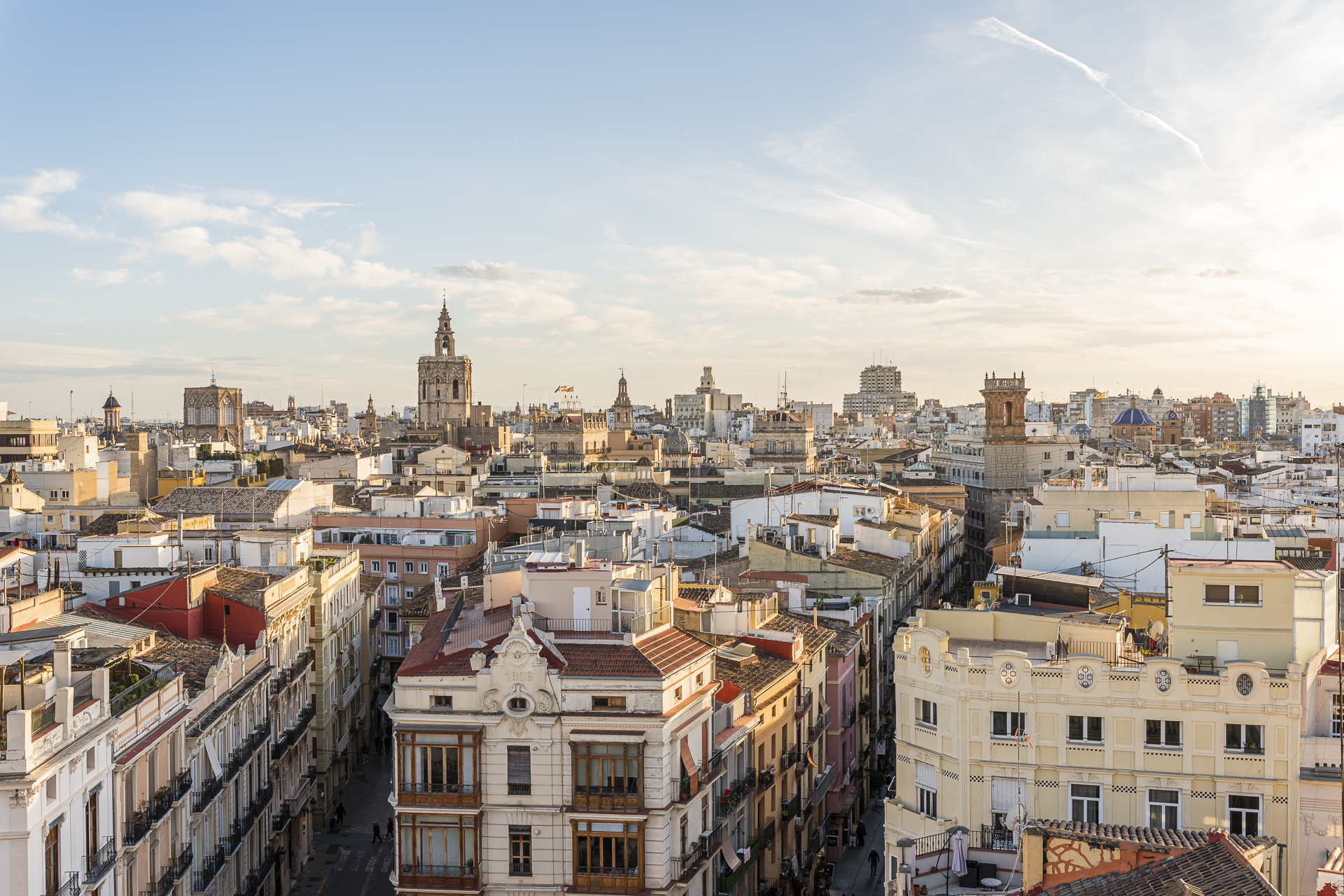
11 tips and sights for your city trip to Valencia
Last year «World Design Capital» and this year host city of «The Worlds 50 Best Restaurants»; In recent years, Valencia has become an attractive destination for foodies, architecture enthusiasts and creative people.
We travelled by train to the third largest Spanish city in the Old Year’s week and spent three days exploring the contrasting districts of Valencia. And apart from the following tips that we can give you for planning your stay in Valencia, let us make the following clear in advance: Yes, – a city trip to Valencia is worth it!
The sights of Valencia at a glance
Designed by the Spanish architect Santiago Calatrava, the “Ciutat de les Arts i les Ciències” building and park complex is one of Valencia’s most famous sights. The futuristic buildings have now become a landmark of the city. They are part of the Jardín del Turia Gardens – one of the largest urban parks in Spain with a length of nine kilometres – and are located in the Turia riverbed, which was drained in the 1960s.
Valencia not only scores with so-called “spectacle architecture”, as we know it from Bilbao or Graz, but also with a charming old town. In the “Ciutat Vella”, which was once surrounded by a mighty city wall, you will find lively squares, impressive historic buildings and great vantage points. Worth seeing here are, among other things, the cathedral with its striking bell tower (Miguelete), the Mercat Central and the Silk Exchange (Lonja de la Seda).
To the south of the old town, the Eixample district offers elegant shopping streets, prestigious buildings from various eras (including the Mercat de Colón, the Mercat de Russafa and the bullring) and trendy districts with hip cafés, restaurants and concept stores.
The old town of Valencia is located a good five kilometers from the Mediterranean coast. However, the extensive sandy beaches can be reached by tram in 20 minutes. A detour towards the sea is not only worthwhile for long city walks, but also because of the exciting urban history of the harbour district “El Cabanyal”.
So, after this brief overview, it’s time to dive into the alleys of Valencia’s old town and discover the corners that are particularly worth seeing with the help of the following tips.
Valencia Tip 1: Wander through the alleys of the old town
The old town of Valencia stretches from the Central Station (Valencia Nord) in a northerly direction to the green belt of the Jardín del Turia. To walk once longitudinally to the Torres de Serranos, you have to calculate a good 20 to 30 minutes. I was surprised by the size of the old town – especially because I have always associated Valencia with the futuristic Ciutat de les Arts i les Ciències. So I wasn’t even aware that the real highlight (at least for me) are the winding and pedestrian-friendly alleys of the old town.
The ideal time for a tour of the old town is in the morning. Then it’s usually quiet here and you can stroll comfortably through the old town for two to three hours. It is up to you whether you want to fortify yourself on the way with a horchata (tigernut milk) typical of Valencia or you prefer a good coffee. For the former, a stopover at the traditional Orxateria Santa Catalina is recommended. For the latter, my tip for a “coffee to go” would be to stop by The Coffee.
By the way: during the orange season from the end of November to March, there are plenty of orange trees in and around the old town of Valencia that provide pretty color accents.

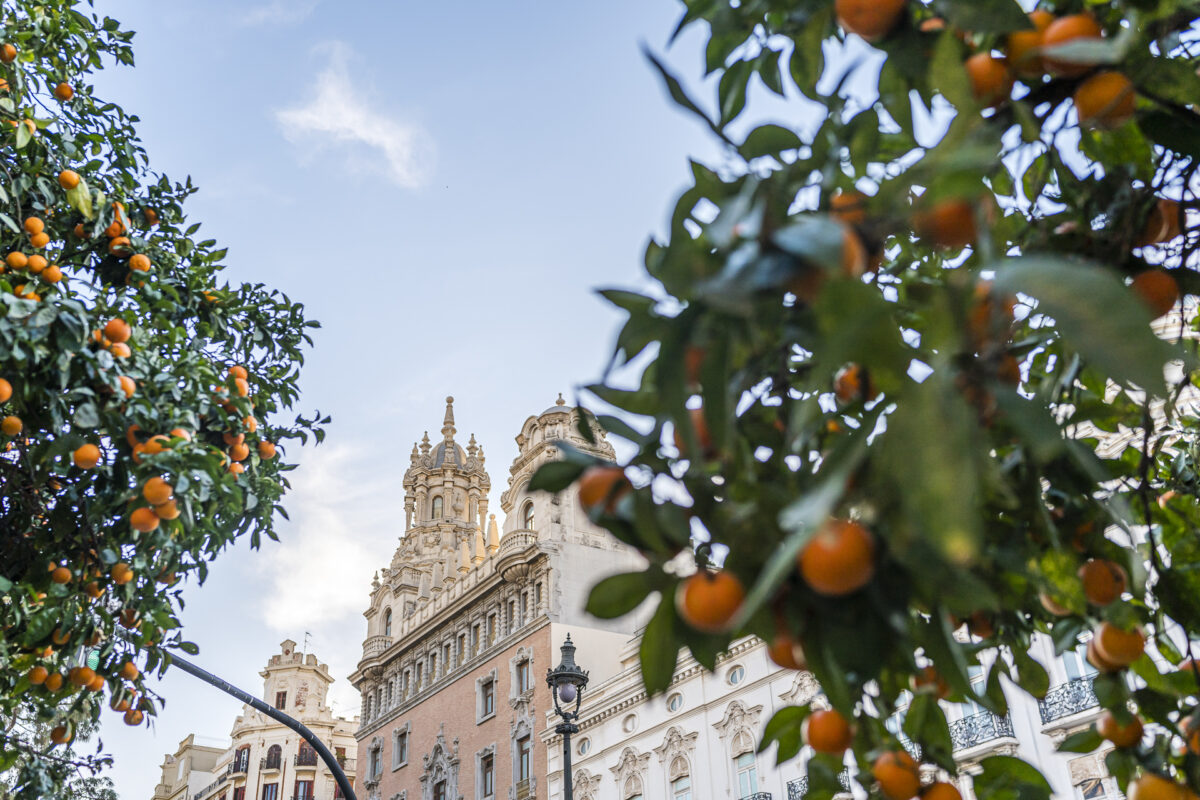
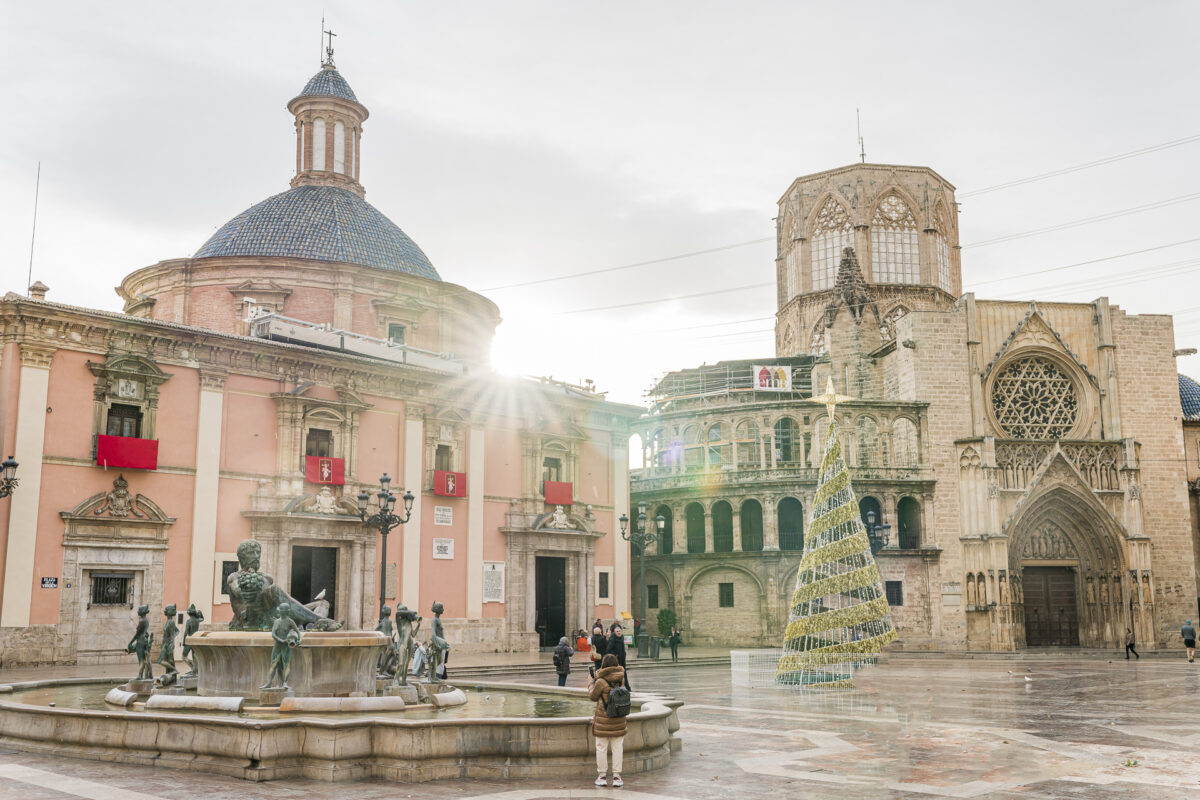
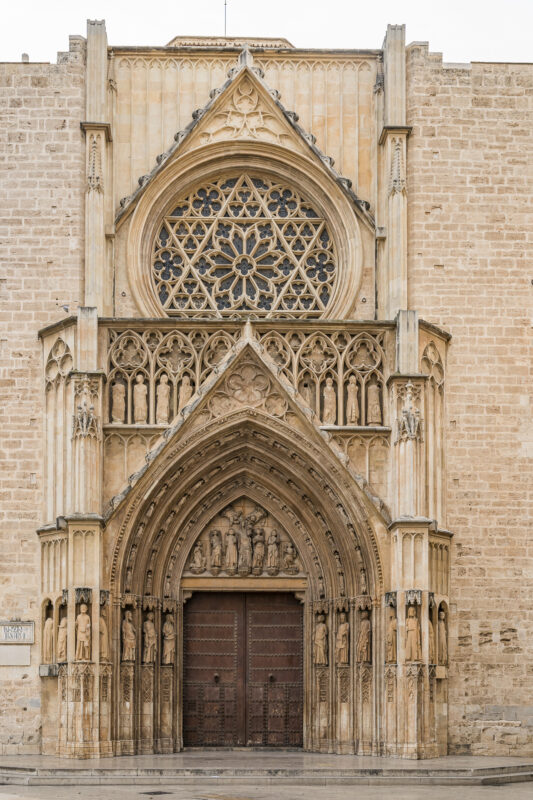
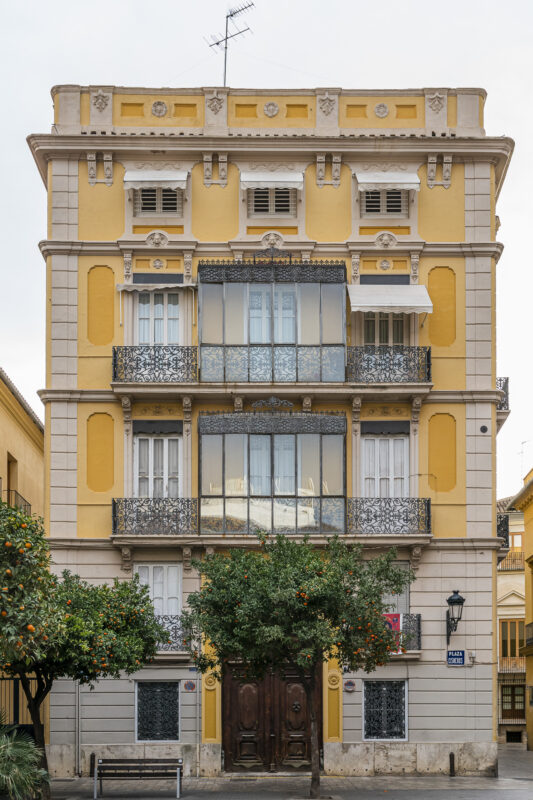
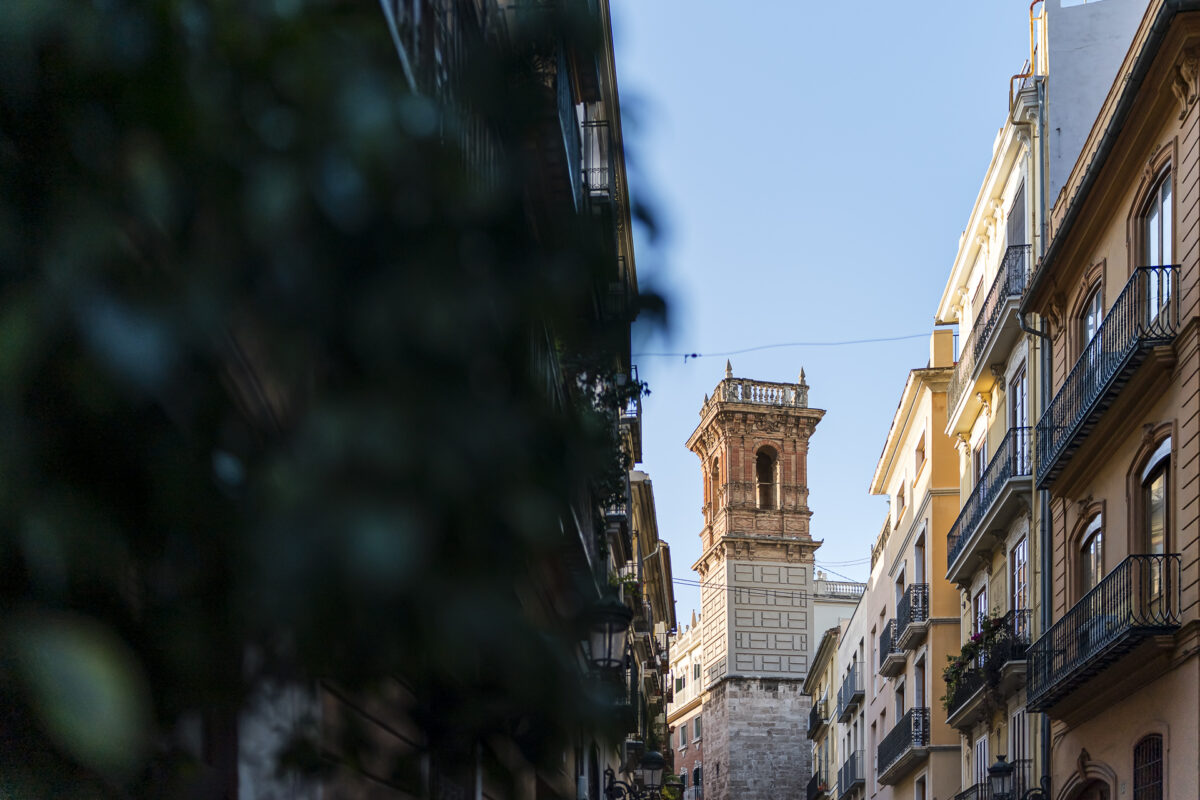
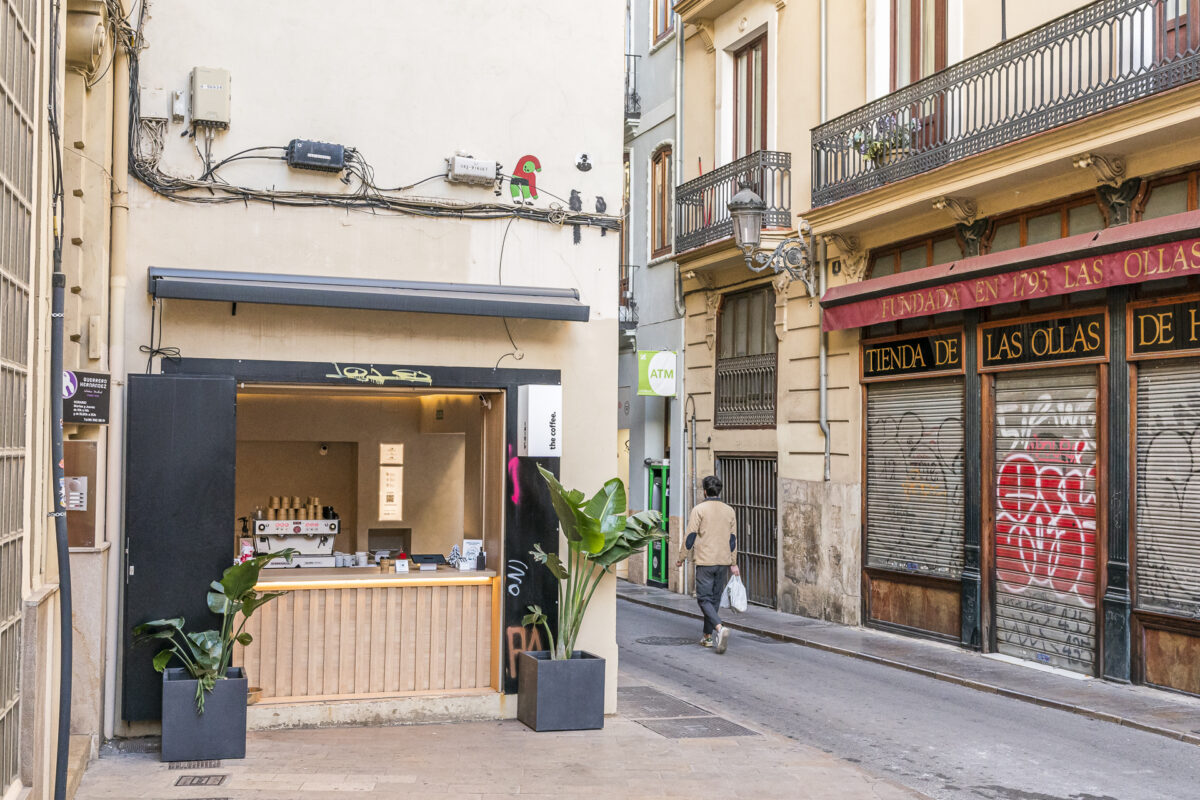
Valencia Tip 2: Visit the Mercat Central
With the smell of freshly roasted coffee in our noses, we walk on towards Mercat Central. In this part of the old town, there is something exciting to discover on almost every corner. This undisputedly includes the market hall built at the beginning of the 20th century. The Art Nouveau building impresses with a beautiful dome and over 1,000 market stalls.
Close to the entrances, the offer is primarily aimed at tourists – but the further you go inside, the more authentic the products become. Here, too, you can get good coffee – at the Retrogusto Coffeemates stand. Another culinary attraction is the “Central Bar” with its tapas. It is run by the 2-star chef Ricard Camarena, whose main restaurant we will visit later.

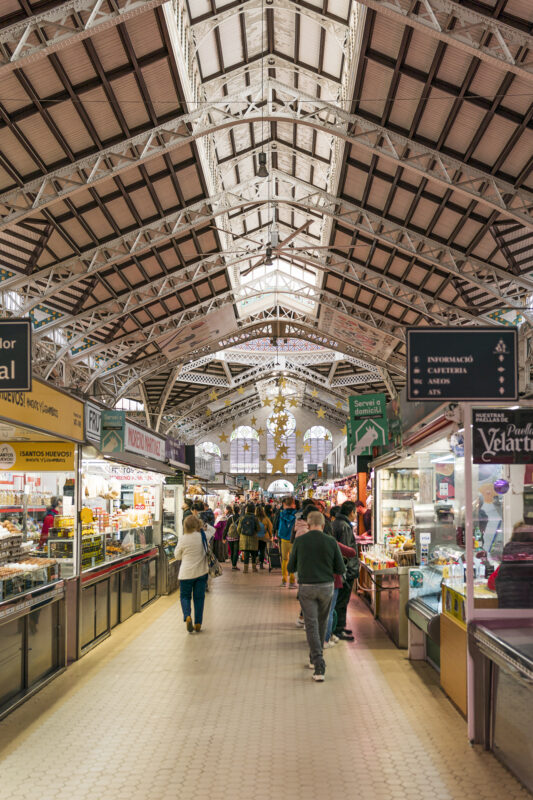

The market hall is open from Monday to Saturday from 07:30 to 15:00.
Valencia Tipp 3: Die Lonja de la Seda bestaunen
The former silk exchange “Lonja de la Seda” is located right next to the Mercat Central. The building, which opened in the Middle Ages as an oil market, is one of the most important buildings of secular Gothic and is a UNESCO World Heritage Site.
The Silk Exchange is open daily from 10:00 am. The tour of the impressive rooms and the beautiful courtyard takes about half an hour.
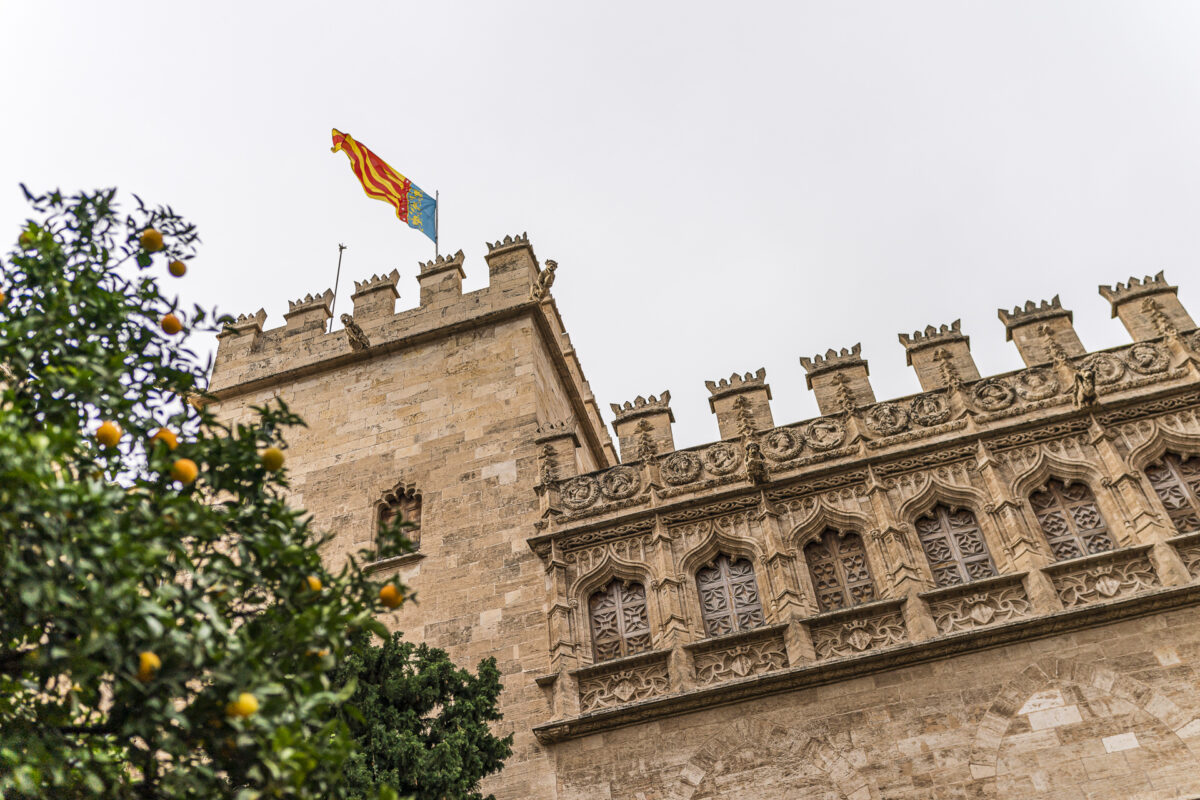
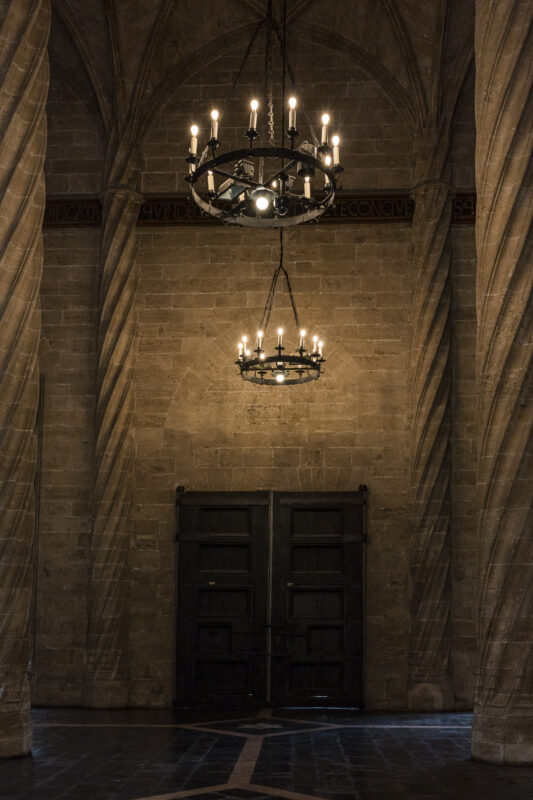
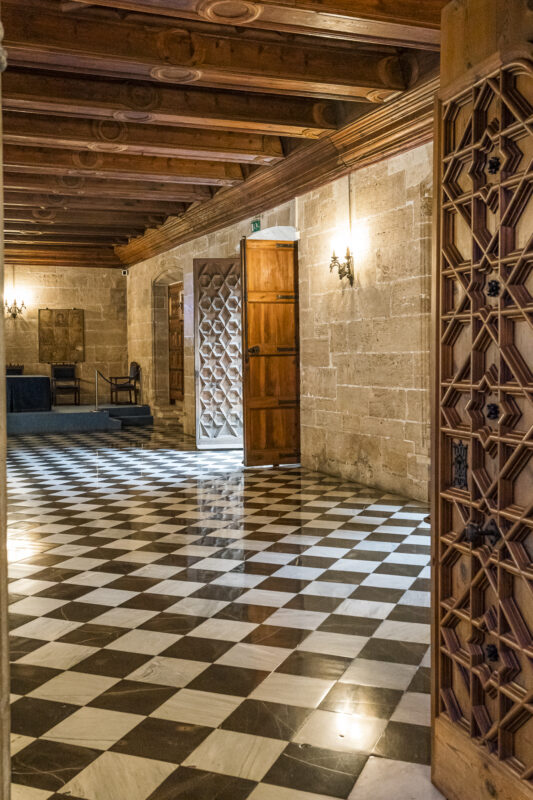
My tip: Visit the silk exchange in the morning, as there are significantly fewer tourists on site. Admission is currently free on all days | further information can be found here: Lonja de la Seda Valencia
Valencia Tip 4: Experience Valencia from a bird’s eye view
Of course, we don’t miss the ascent to the viewpoints during our tour of the old town. In the old town you have the opportunity to look at Valencia “from above” at the following places:
- On the bell tower of the cathedral «El Miguelete»
- From the two surviving city gates (Torres de Serrano and Torres de Quart)
- On the Torre de Santa Catalina
We explored all the viewpoints except for the Torre de Santa Catalina. The Torre de Santa Catalina is only accessible between 11:00 a.m. and 1:00 p.m.
For the ascent to the 50 m high bell tower “El Miguelete” you pay 2 euros entrance fee. The 207-step spiral staircase is operated in a one-way mode – i.e. at 15′ intervals it goes either only up or only down. However, the rush was limited and fortunately we hardly had to queue despite this time limit. Thanks to the height of the bell tower, you can enjoy a magnificent view from the top over the districts of Valencia to the Mediterranean Sea.
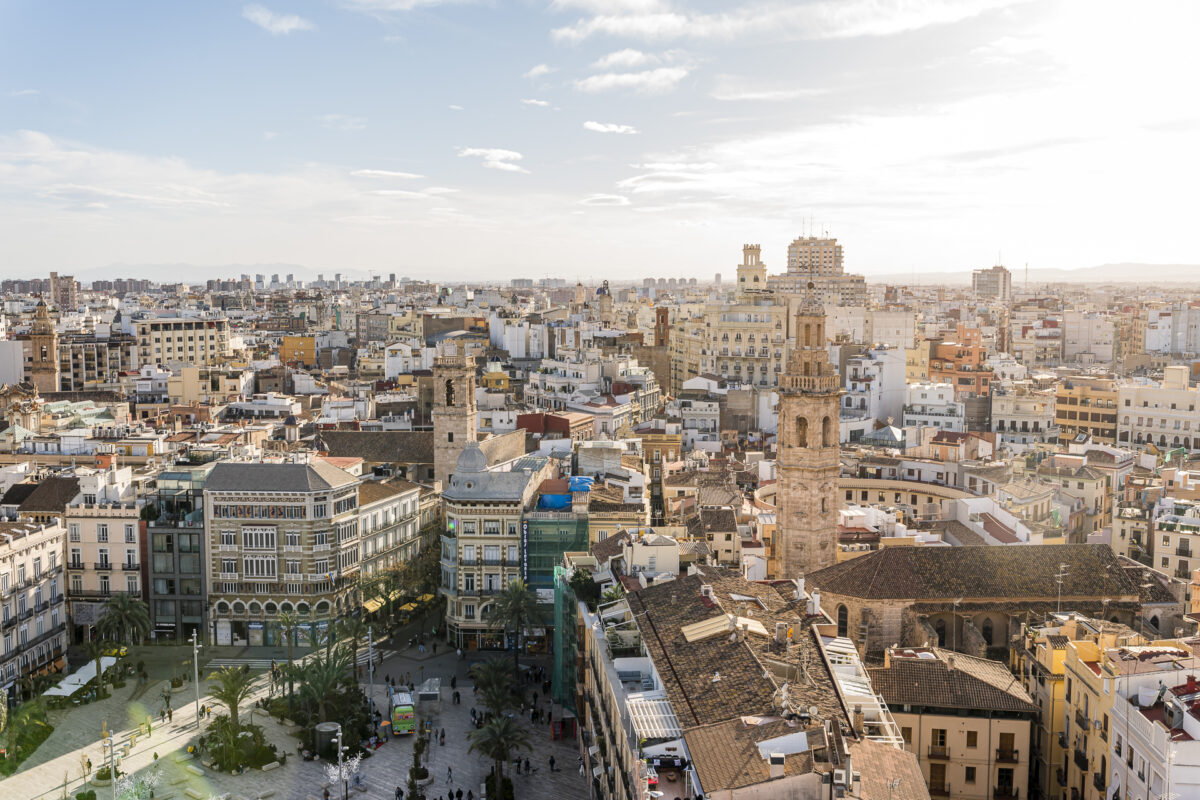
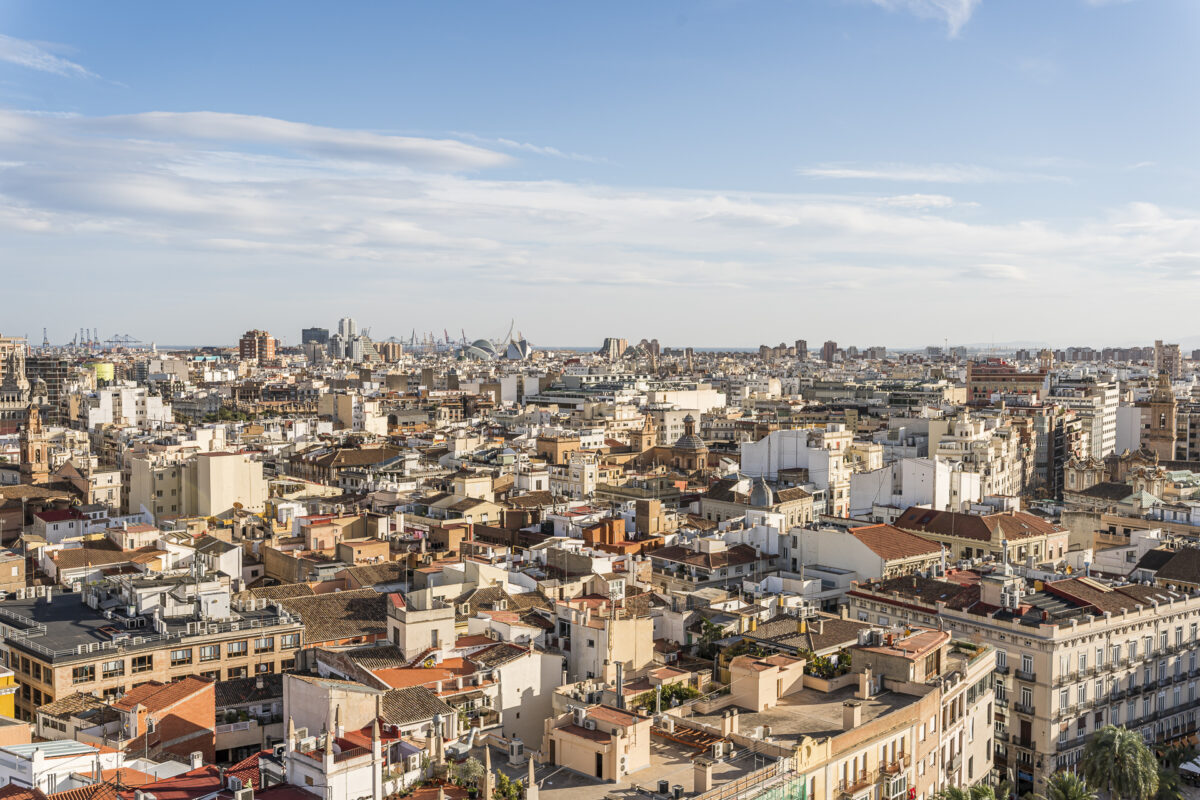
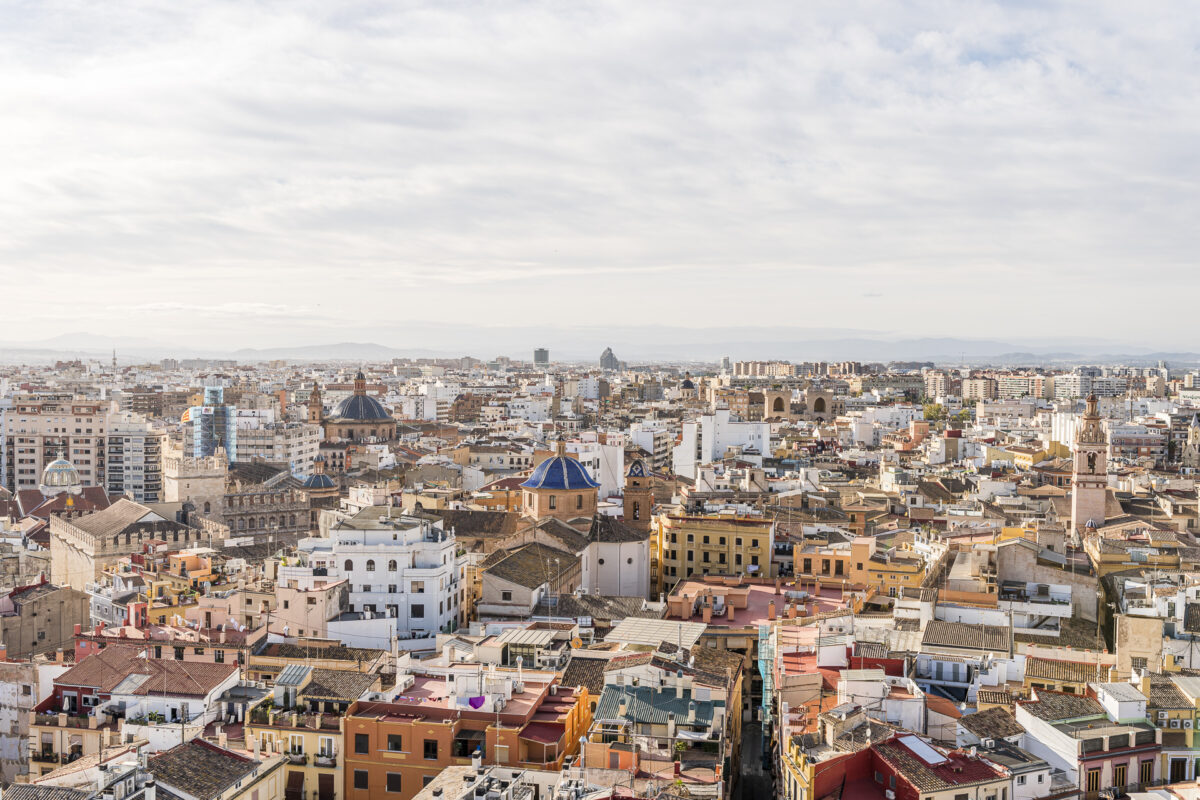
The ascent to the viewing platforms on the two city gates is currently particularly worthwhile because, like the Lonja de la Seda, they are accessible free of charge until further notice. Interestingly, the Torres de Quart are significantly less frequented than the Torres de Serrano. So if you want to relax and enjoy the evening light over Valencia without many people around you, it’s best to head for the Torres de Quart.


Both the city gates and the Miguelete are open daily from 10:00 am. In the evening, opening hours vary depending on the season and day of the week.
Extra tip: Valencia Cathedral not only offers a great view over Valencia with its bell tower, but is also the scene of the “Tribunal de las Aguas” every Thursday at 12:00 noon. The so-called “Water Court” is considered the oldest legal institution in Europe and was declared an intangible cultural heritage by UNESCO in 2009. The public procedure, which is used to settle disputes around irrigation issues, was introduced during the Moorish rule in the Middle Ages. More information: Water Court of Valencia
Valencia Tip 5: Discover art in the old town district of El Carmen
In the northwestern corner of Valencia’s old town lies the Barrio del Carmen. Here, where the Moorish rulers of the time built the first walled city in the Middle Ages, today you will find a colourful potpourri of a lively pub scene, street art, cultural institutions and hidden historical witnesses. One such example is the Portal de Valldigna, which was the entrance to the Moorish quarter in the 15th century.
If you are interested in contemporary art, I recommend a trip to the “CCCC” (Centre del Carme Cultura Contemporània) and the nearby “IVAM” (Institut Valencià d’Art Modern). Both institutions can be visited free of charge on Sundays. We found both museums absolutely worth seeing. If I had to choose one of the two due to lack of time, I would choose the CCCC because it is located in the repurposed premises of the Carmen Monastery (the namesake of this district).

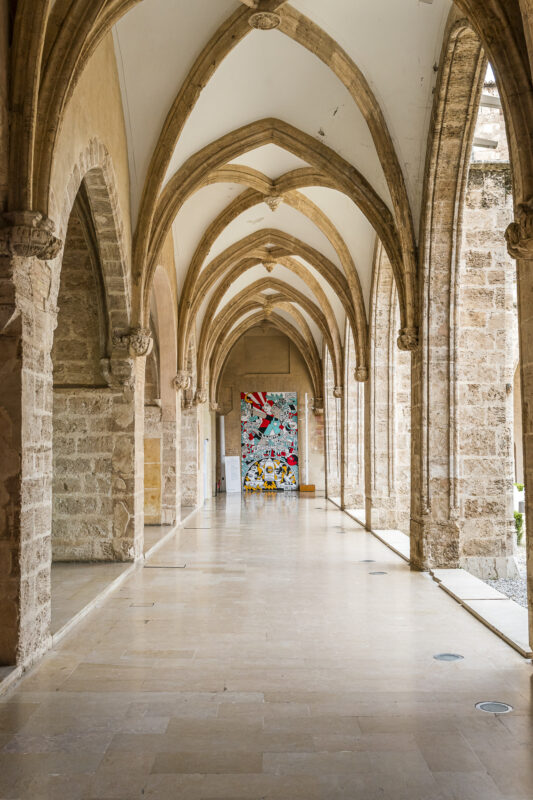
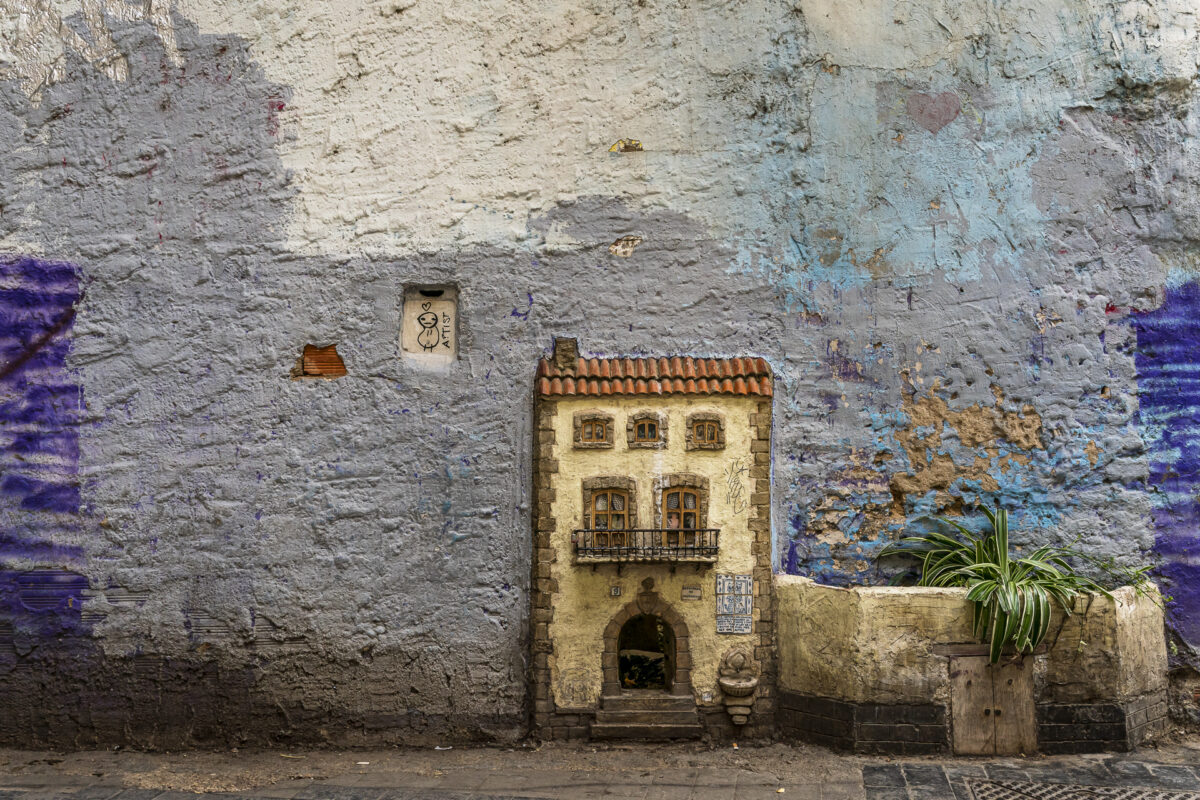
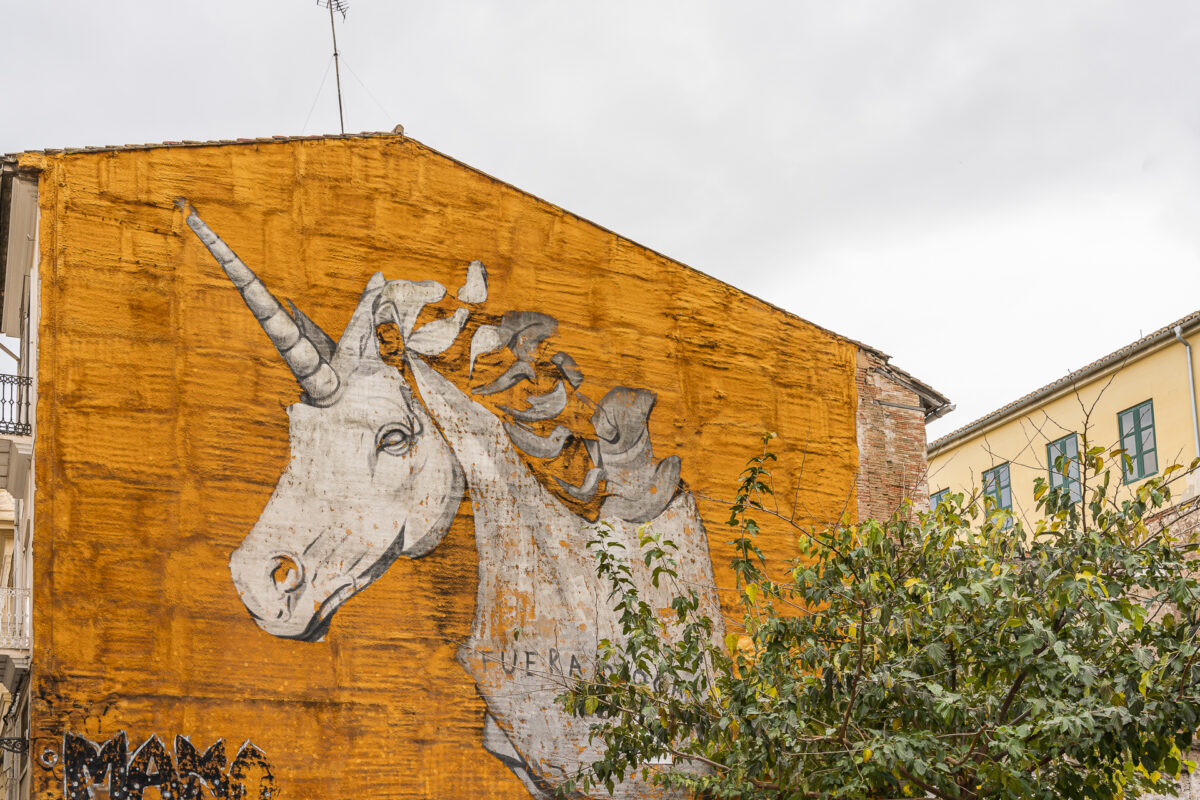
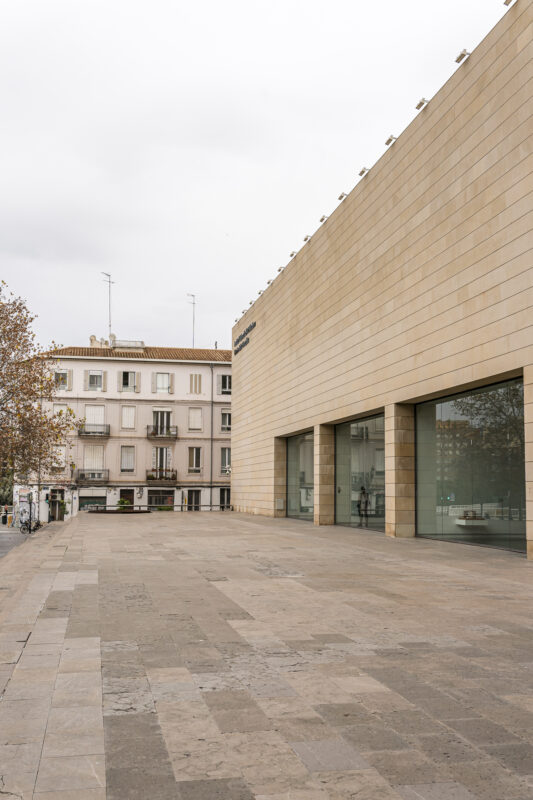
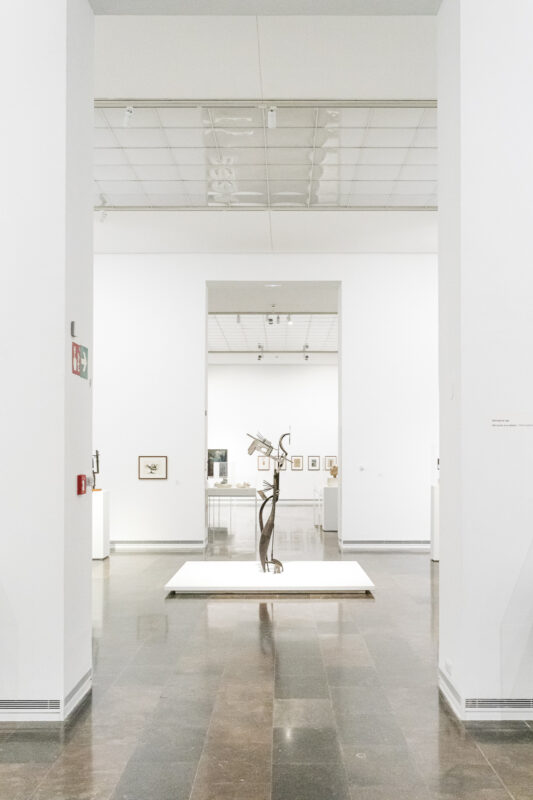
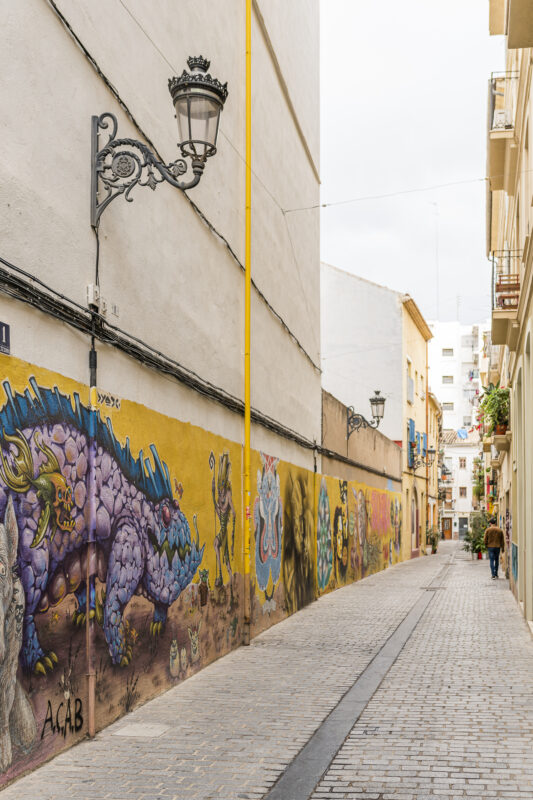
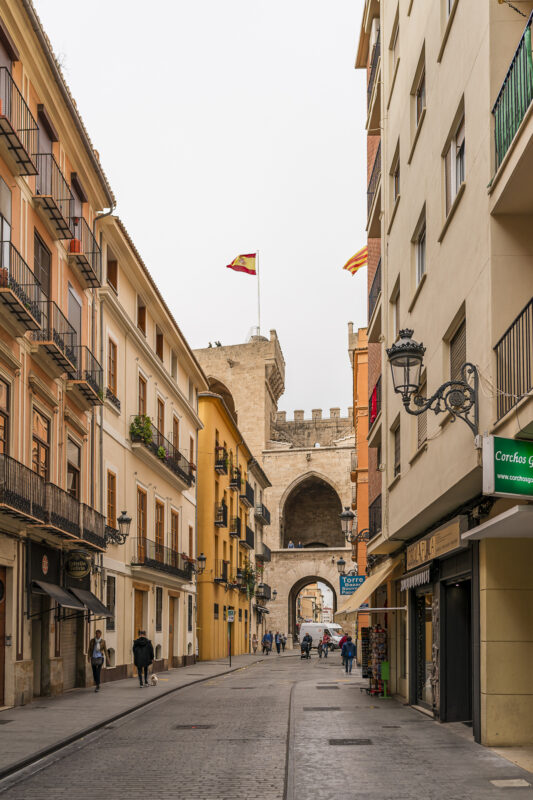
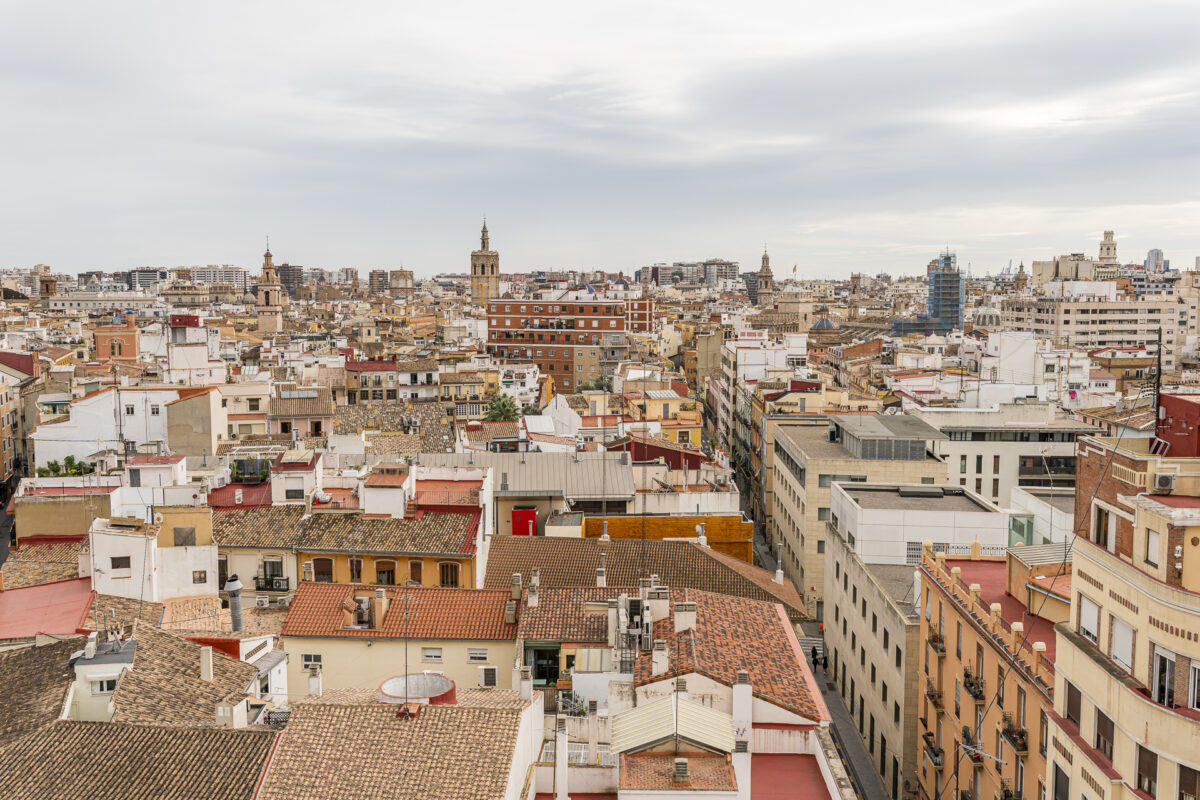
Extra tip: I tracked our tour through the old town of Valencia via Komoot. If you want to follow my tracks exactly and don’t want to miss any of the sights mentioned above, you can download the GPS data here (note that the strange route in front of the Portal de Quart is due to a tracking error – we just followed the C/de Quart straight ahead).
Valencia Tip 6: Explore the multifaceted trendy district of Russafa
Another district worth seeing is Russafa (or Ruzafa in Spanish) southeast of the main train station. Russafa is often referred to as the “hipster quarter” due to its mixed structure. And indeed, it seems to me that Carrer de Cuba could actually be located somewhere in Zurich’s Kreis 4 between Bäckeranlage and Bullingerplatz. However, Russafa is not only home to a particularly high density of hip cafés, but also up-and-coming restaurants and exciting buildings such as the bullring, built in the classicist style, or the Mercat de Russafa, built 100 years later in the age of the “concrete cult”.
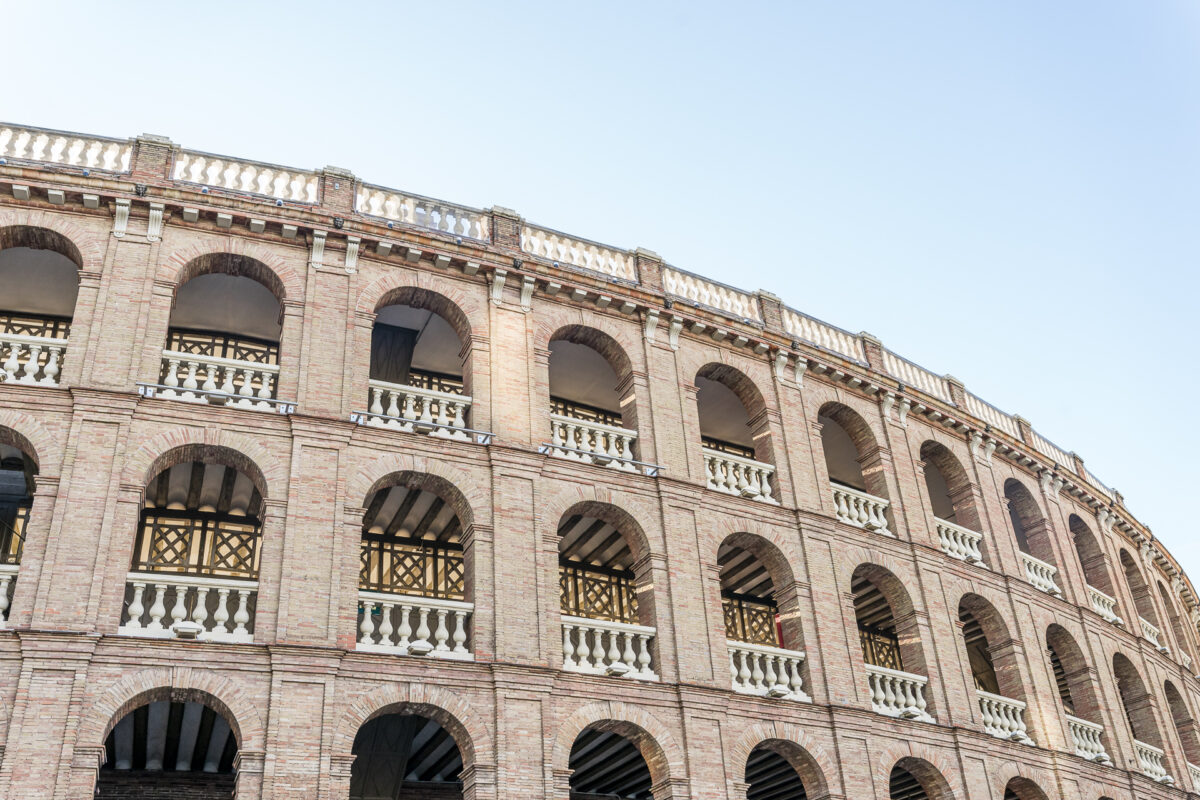
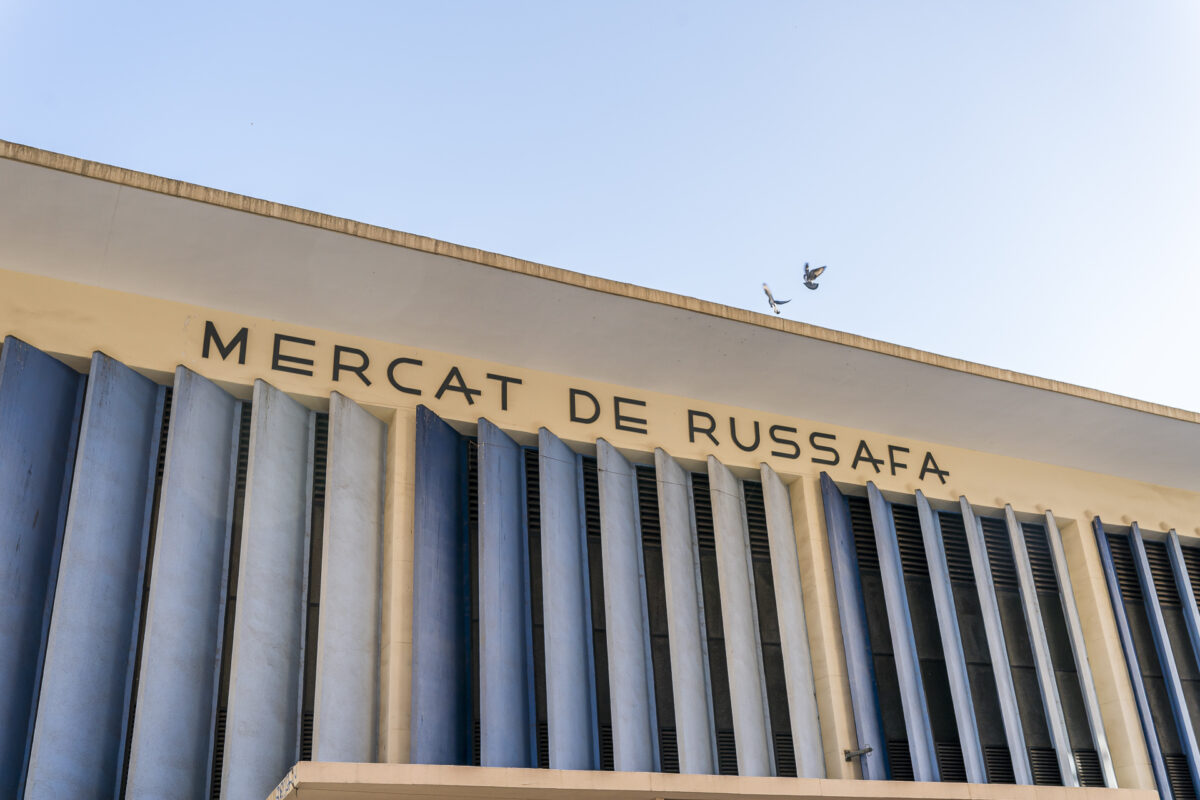
We actually wanted to get our coffee here at the Fran Café. But the small coffee shop was closed over the holidays. So we ended up in the dulce de leche, which is recommended in many places. If you’re into sweets, you’ll definitely feel like you’re in paradise here. I, on the other hand, felt almost overwhelmed by the sheer abundance of cakes and pastries. What speaks for this café is the possibility to sit outside (in the sun) – which is not possible in so many places in Valencia in winter, despite the most beautiful weather, due to the low sun.

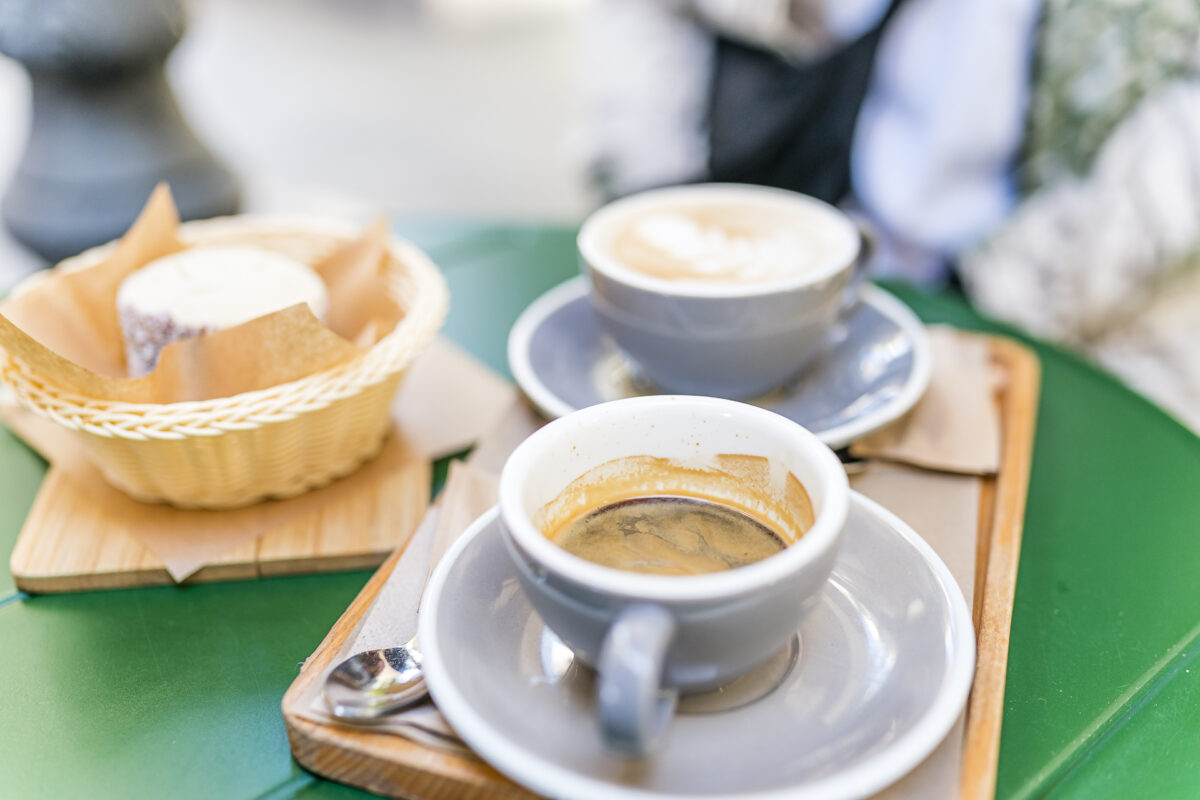
Valencia Tipp 7: Die City of Arts and Sciences besichtigen
After coffee in Russafa, we continue our walk towards Ciutat de las Arts i les Ciències. The City of Arts and Science is the modern landmark of Valencia and a total contrast to everything we have seen of this city so far. In addition to the monumental architecture, which – it seems to me – primarily served Santiago Calatrava’s self-realization, there are also various museums here that you could look at. However, the wonderful winter weather (20° and sunshine) prevents us from visiting the Palau de les Arts or the Science Museum. Instead, we sit in the sun and let the system as a whole work its magic on us.
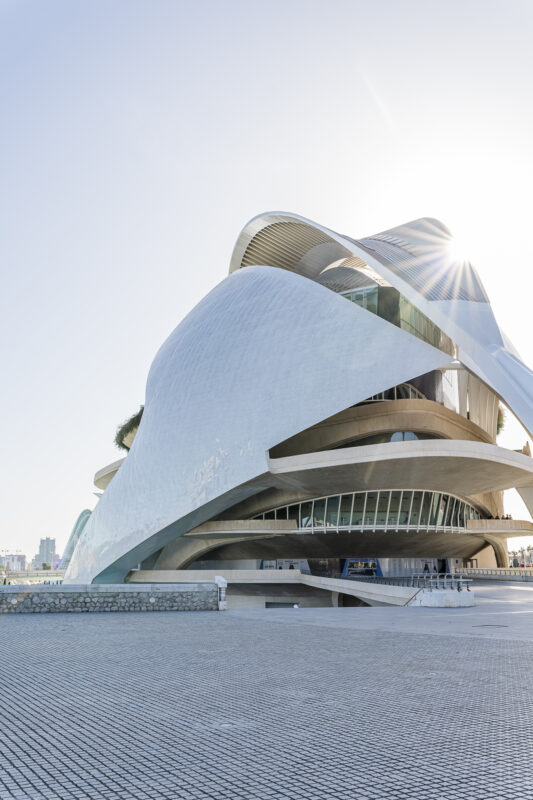
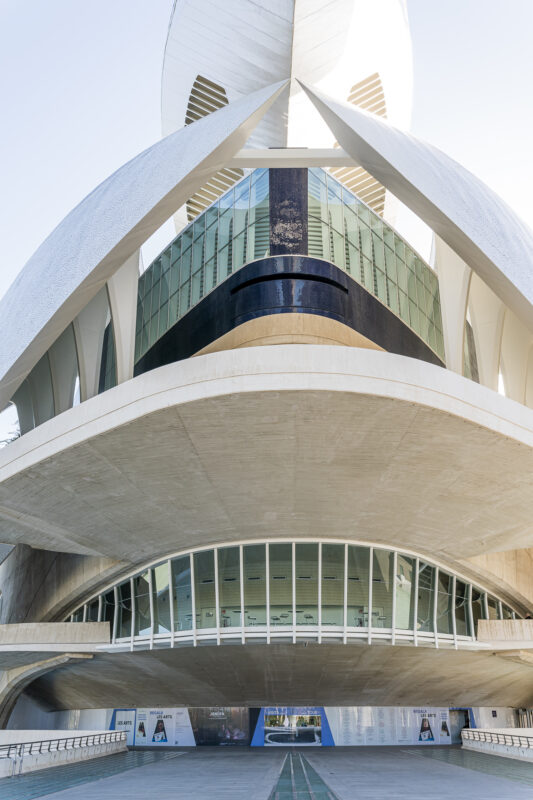
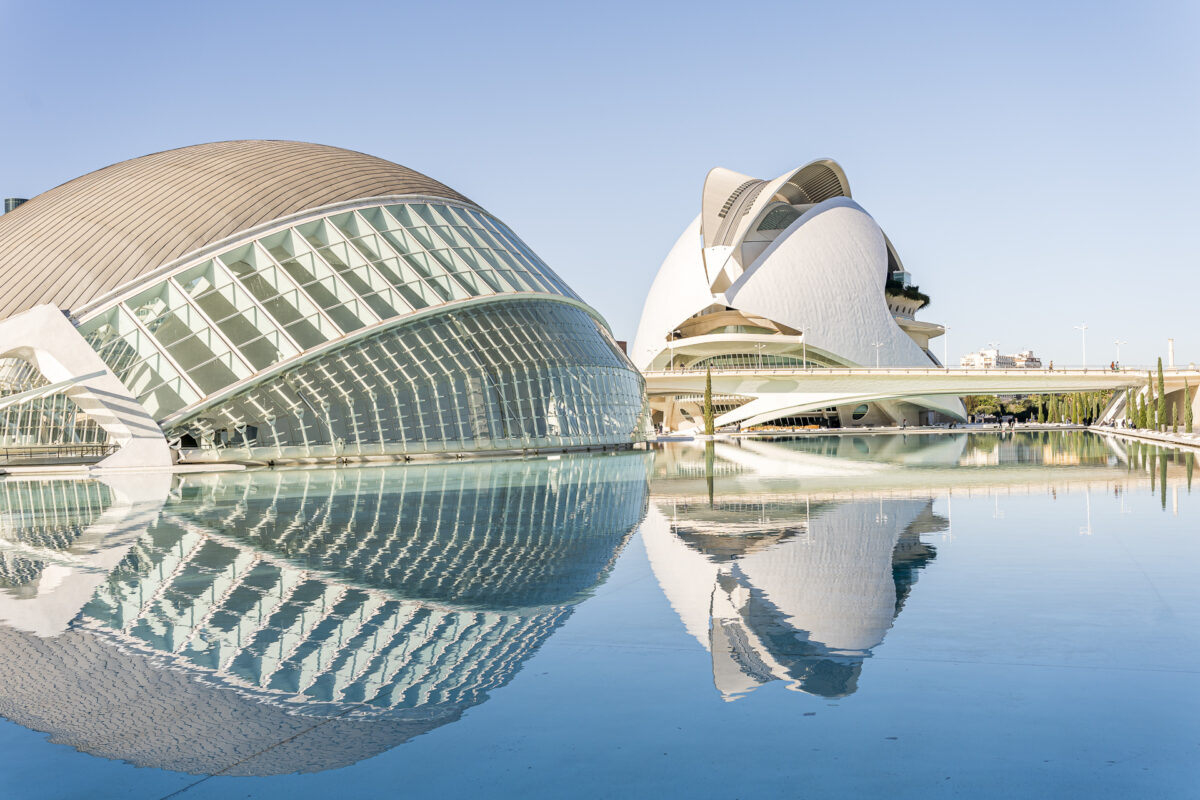
Valencia Tip 8: Plan a detour to the district of El Cabanyal
Afterwards we continue towards the harbour. We cross the Pont l’Assut de l’Or and head for the once independent fishing village of “El Cabanyal”. A comprehensive chronology of “El Cabanyal” can be read here.
In a nutshell, the harbour district, which was mainly built in the 2nd half of the 19th century in the style of “Modernismo”, was to be demolished after its incorporation into the city of Valencia in favour of connecting the centre of Valencia to the sea by means of wide, representative streets. After years of wrangling over the future of the original “El Cabanyal”, the tabula rasa strategy of the 1960s was averted. Luckily! In the grid-shaped streets, most of which are two-storey Art Nouveau buildings, architectural gems can be found despite years of neglect.
Since 2019, various renovation programmes, interim use projects and artist campaigns have also been underway. For those interested in architecture, the Valenciaplaza website provides an overview of 10 Art Nouveau buildings that are particularly worth seeing. However, we refrained from marking photo spots in advance and walked unbiased via Carrer de la Barraca (with a stop at the recommendable coffee shop “Tallat Speciality Coffee”) to Carrer dels Pescadors and on to La Fabrica de Hielo, located on the beach promenade.
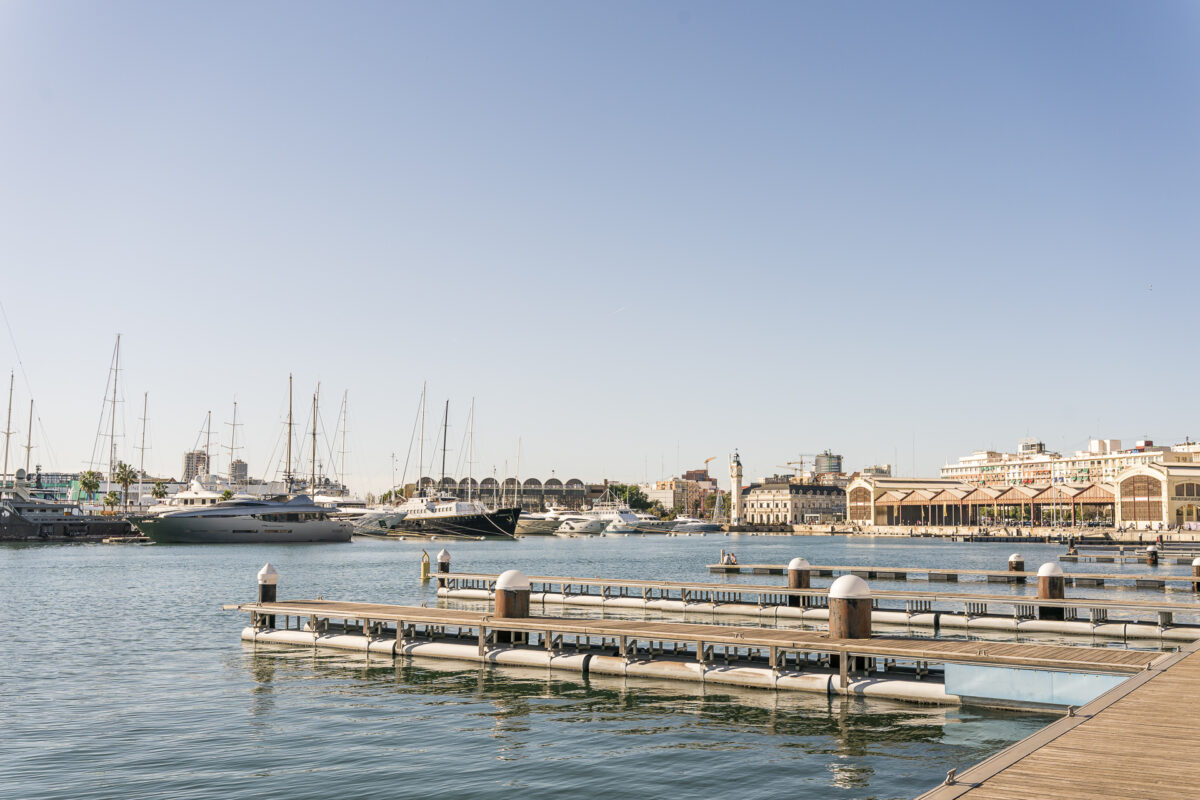
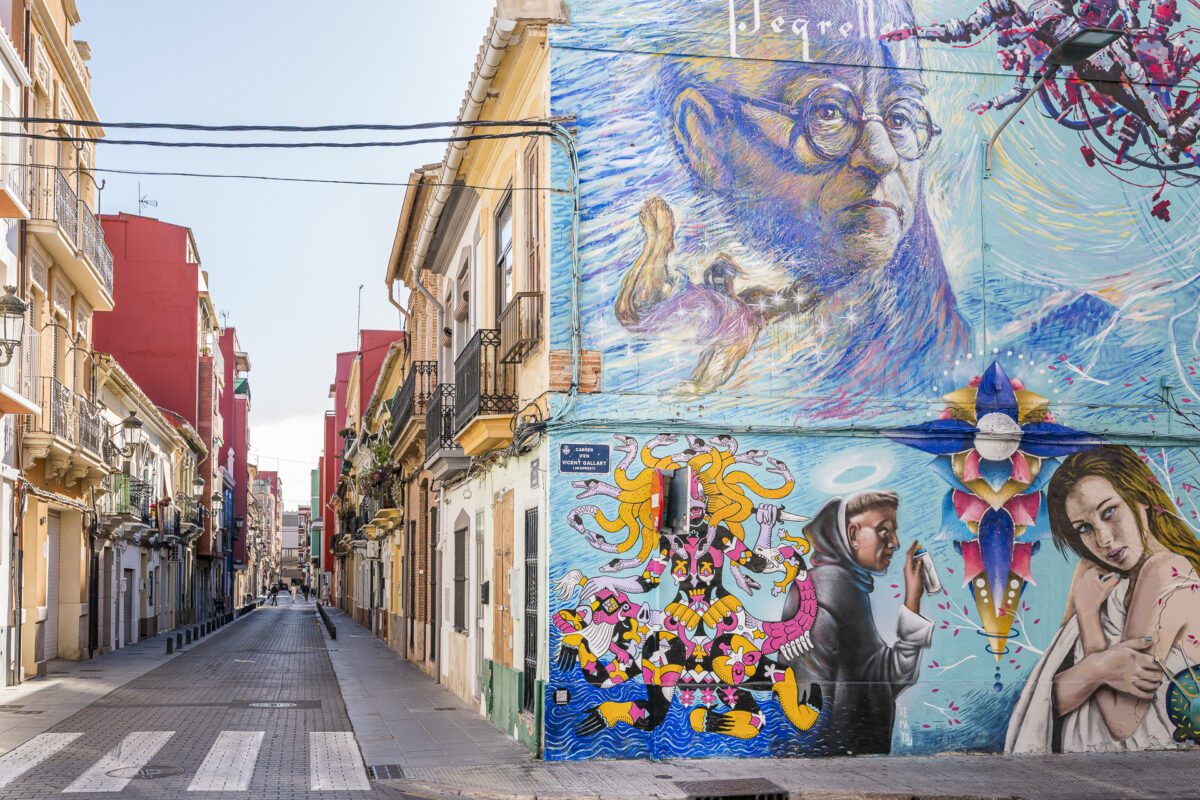
Valencia Tip 9: Enjoy a Paella Valenciana with a sea view
If there is one dish that is emblematic of Valencia, it is paella. According to the original recipe, a paella Valenciana is made with rice, garrofó and ferradura beans, as well as chicken and rabbit meat. And a particularly traditional restaurant specializing in paella is located directly on the beach promenade of Playa de las Arenas. Is La Pepica, where illustrious personalities such as Ernest Hemingway or the Spanish royal couple are said to have dined, actually serve the best paella? Hardly! But in my opinion, it is still a perfectly valid choice for a lunch with a sea view. And yes, there are also vegetarian paella variations on the menu.
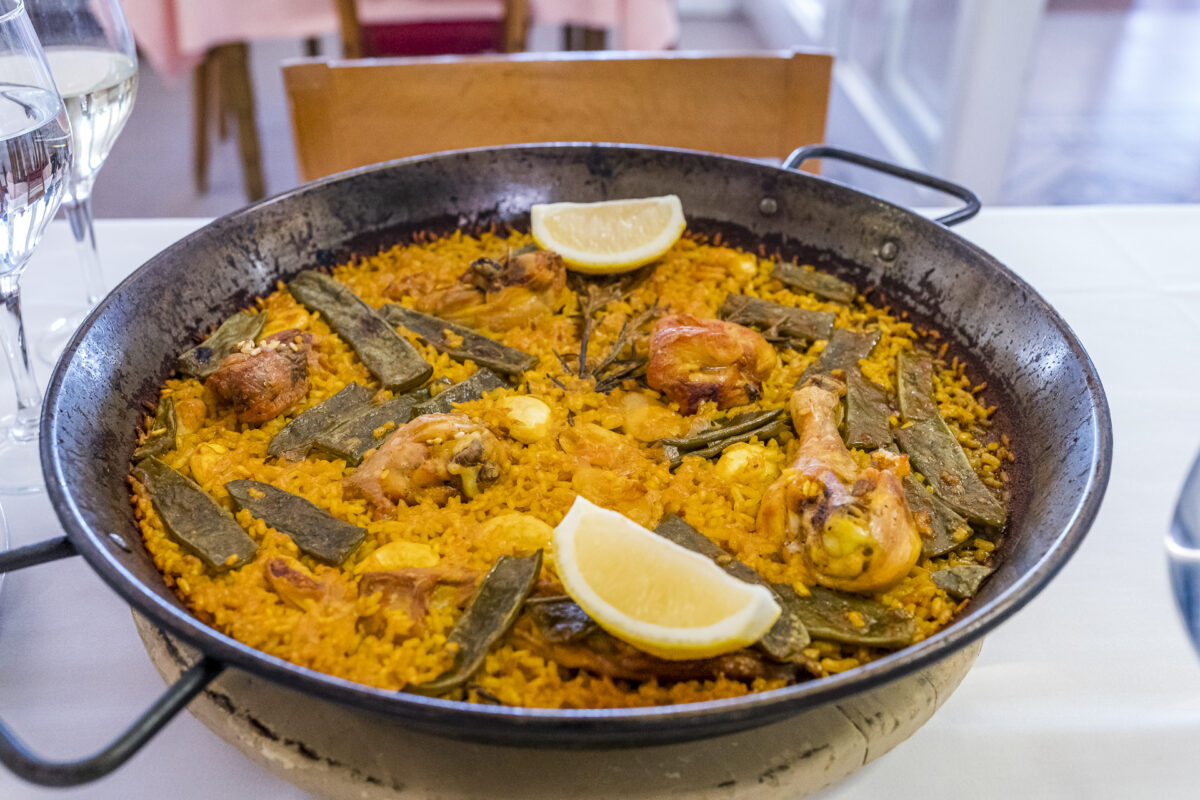
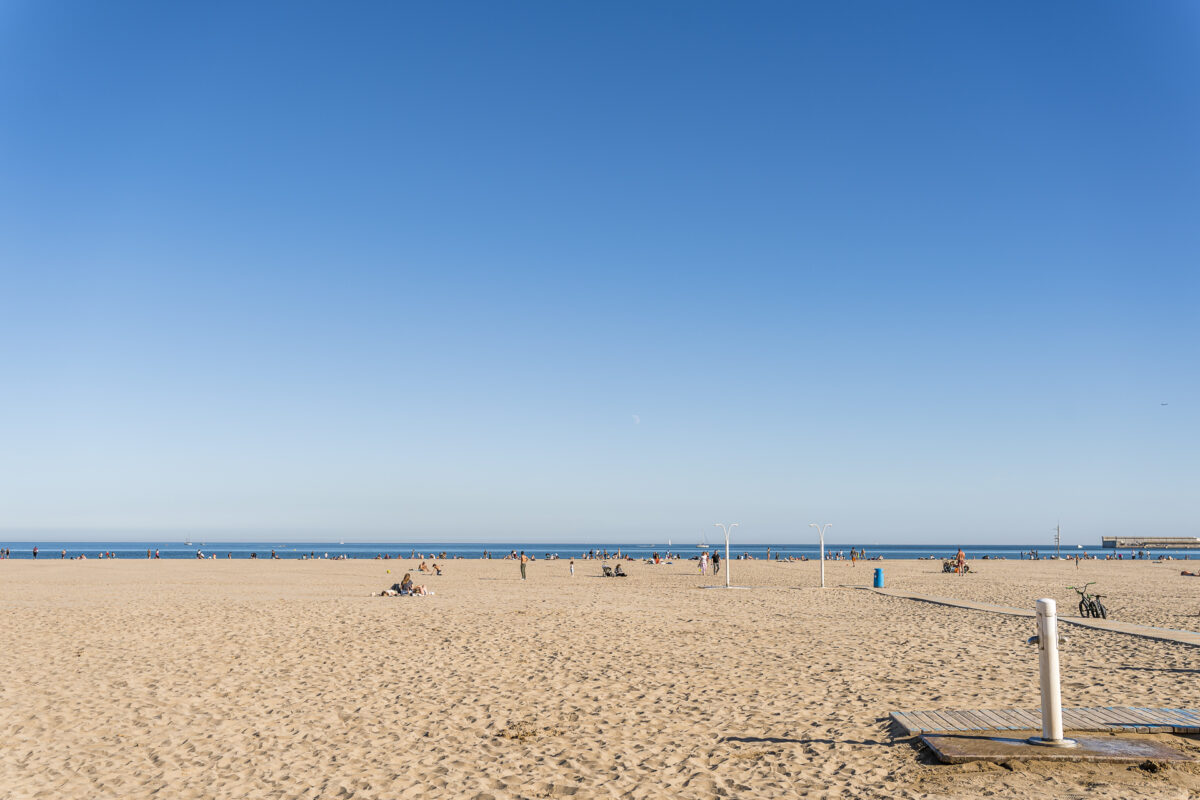
Please note that from two days before the selected reservation date, reservations will no longer be accepted via the online tool. I tried the telephone reservation recommended on the website from this point on without success. What worked without any problems, however, was to simply stand in the queue shortly after the doors opened at 1:00 pm. After a few minutes of waiting, we received a table (inside).
Valencia Tipp 10: Durch den Jardin del Turia spazieren
From the harbour district, we take the tram (line 4) back to the northern part of the old town. Alternatively, we could have rented a bike for this trip to the sea. Valencia has a fairly well-developed network of bicycles.
This also leads longitudinally through the nine-kilometre-long Jardín del Turia. Imagine if this unique contiguous park had been repurposed in the 1960s after the river was diverted to a city highway… Fortunately, these plans were not pursued! Whether by bike or on foot, a detour to Valencia’s “green belt” is definitely not to be missed.
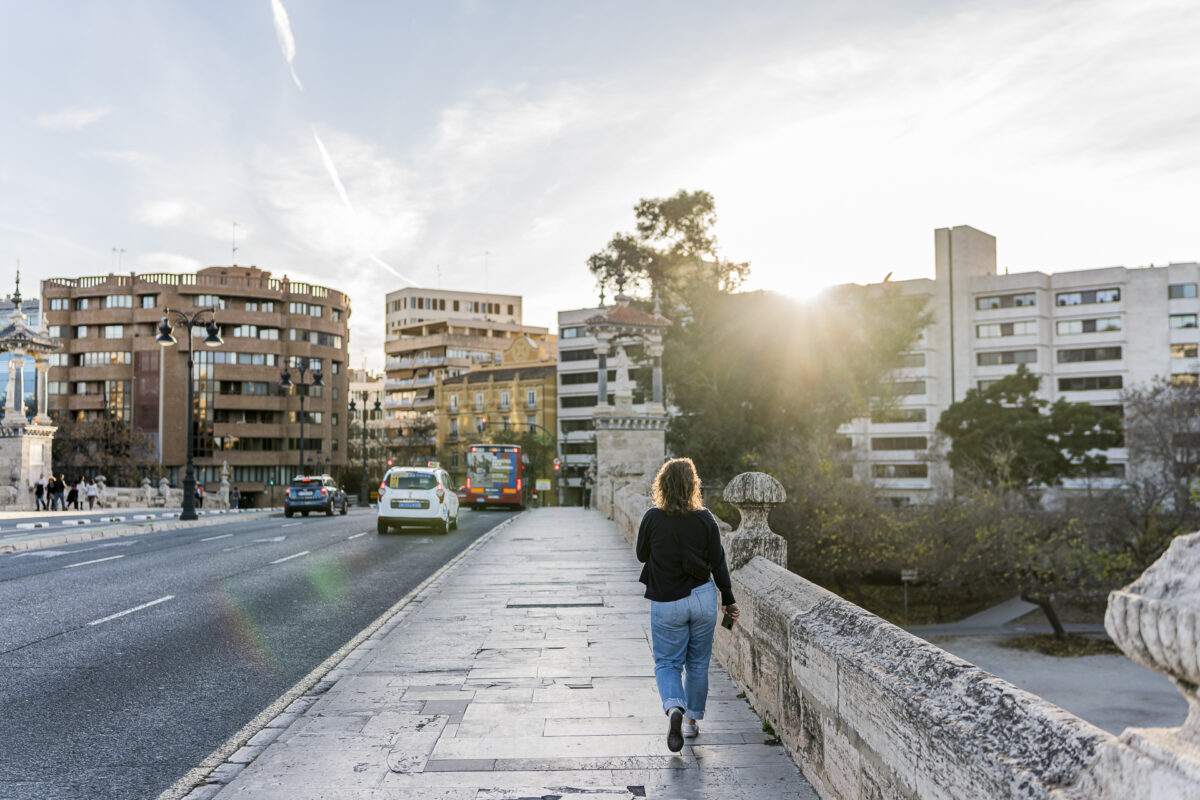
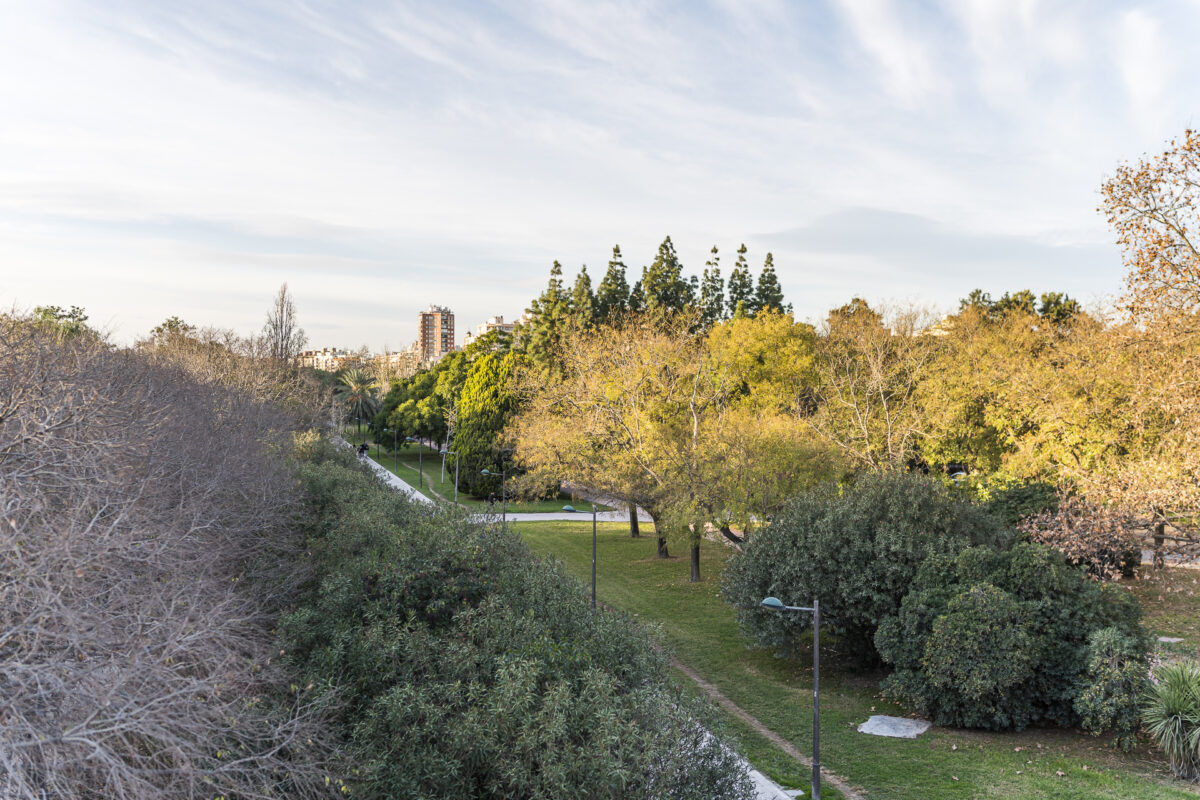
Valencia Tip 11: Immerse yourself in the innovative gastronomy scene
As written in the introduction, Valencia has an up-and-coming food scene. Unfortunately, not all of the exciting restaurants were open during our visit over the festive period. Nevertheless, we were able to get a good overview of the range of culinary offerings in three excellent restaurants.
Awarded two stars and a green star is the main restaurant of chef Ricard Camarena. It is located in a converted industrial complex, which also houses a trendy art gallery (“Bombas Gens”). There are three menus to choose from, including a plant-based one, in a price range between 155 and 195 euros. Even though the service seemed a bit stiff at the beginning, it was an all-round successful evening for us in the end with an excellent meal and an exciting wine accompaniment. Definitely our number 1 in Valencia.
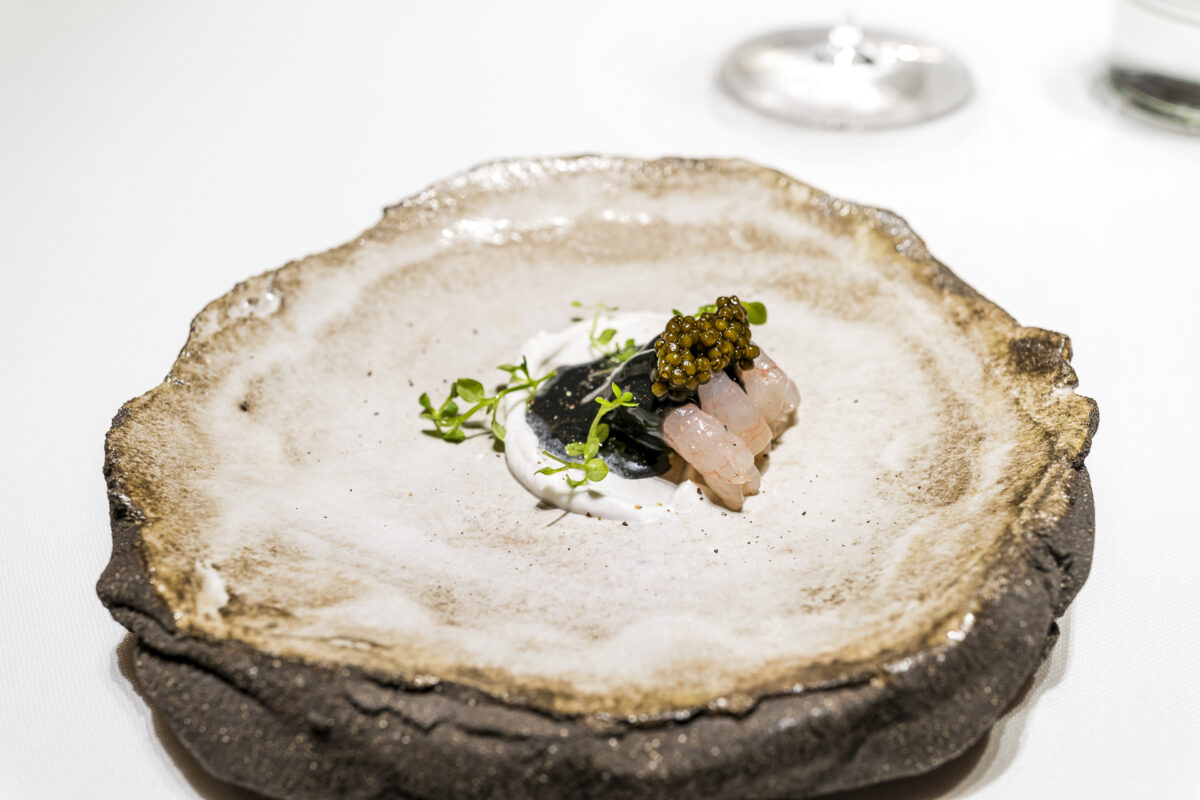

With a rather cool ambience we were welcomed by the restaurant Lienzo (1 star). Here we had reserved a table for lunch and this for two reasons: the chef is a woman (Maria José Martínez) and the menu of the day costs just 55 euros (the full menu with 14 courses is also a “bargain” for 100 euros).
The second gourmet evening took us to “El Poblet” on New Year’s Eve. Since we didn’t taste the regular menu in the city’s second 2-star restaurant, I can’t draw a direct comparison with Ricard Camarena. To be honest, I have to admit that if all the Michelin-starred restaurants had been open, I wouldn’t have stopped at El Poblet, but rather at La Salita. For me, purely because of the website (pictures, chef, menu, price structure and location) the second choice after Ricard Camarena.
Our hotel tips for Valencia
Our choice of hotel fell on the newly opened Hotel Puerta Serranos (*partner link), which is located right next to the Torre des Serranos in the northern part of the old town. The location is great to explore the old town – especially El Carmen – on foot. There is also nothing else to complain about in terms of equipment.
However, a disadvantage of this location is the public transport connection from/to the station (especially from València Joaquín Sorolla station, where the high-speed trains stop). For example, the nearest metro station “Túria” is 1.4 kilometers away.
For the next time, we would probably opt for a hotel in a more central location. For example, the Hotel Marqués House*, which belongs to the same hotel group (MYR Hotels) as the Hotel Puerta Serranos, is better located.

More tips for your city trip to Valencia
The city of Valencia is located in the east of Spain on the Mediterranean coast, about 350 kilometers south of Barcelona. With around 800,000 inhabitants, Valencia is the third largest city in Spain after Madrid and Barcelona.
Valencia is the capital of the province of the same name (Valencian Community).
There are two official languages in Valencia. On the one hand, this is Valencian, which belongs to the Catalan language group. On the other hand, this is Spanish (“castellano”). I myself understand and speak Spanish (more or less at a B2 level) – but at the places we visited you would have made good progress with English.
We had planned 2.5 days for sightseeing, which seems like a reasonable time budget to me. During this time, we got a good overview of the different neighborhoods of Valencia.
We traveled by train via Paris and Barcelona to Valencia. From Paris, there are two fast TGV connections to Barcelona every day (6.5 hours travel time). From Barcelona, the journey time by high-speed train is still 3 hours. Due to unfavorable connections, this variant with 2x changes according to the current timetable can only be implemented with an overnight stay in Paris or Barcelona. Alternatively, there are connections from Zurich via Mulhouse & Montpellier – so you can make it to Valencia within a day if you depart before half past 06:00 in the morning.
Valencia is an attractive destination all year round. We enjoyed a lot of sunshine and pleasantly mild temperatures between 15° and 20° at the end of December/beginning of January. For all those who primarily want to explore the city and its sights and are not interested in extended beach days, I recommend a trip between October and April. Note that the Fallas take place at the beginning of March and then the number of visitors is particularly high.
Valencia Map
For a better overview, you will find all the sights, museums, restaurants mentioned in the article as well as our hotel tip geographically located in the following map. I hope you enjoy planning your city trip to Valencia.


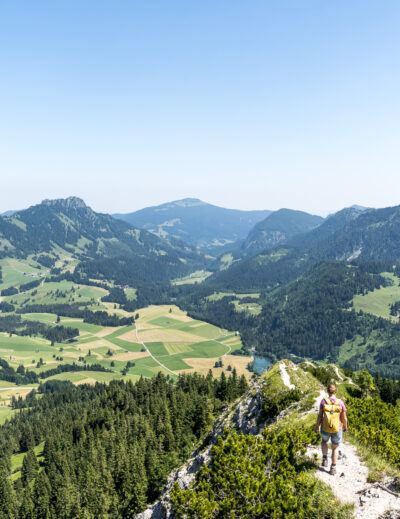
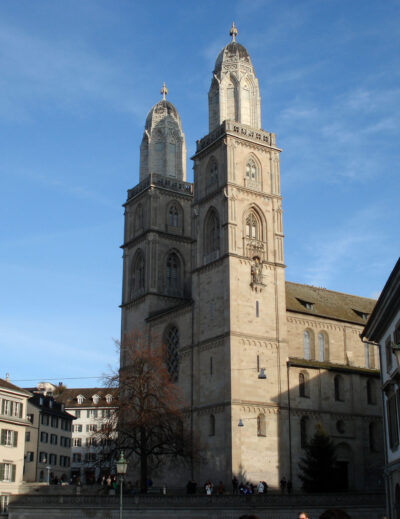
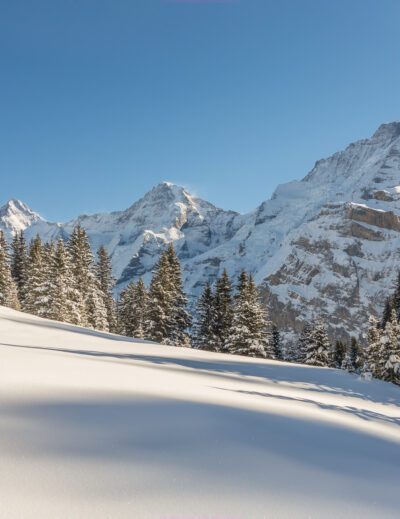
Leave a Reply